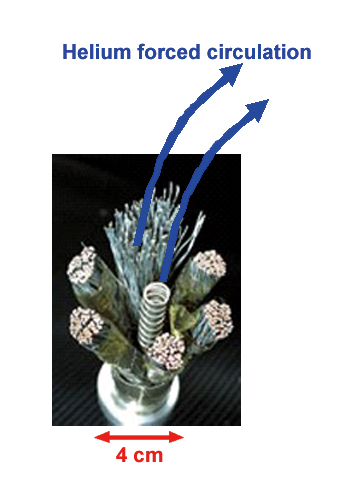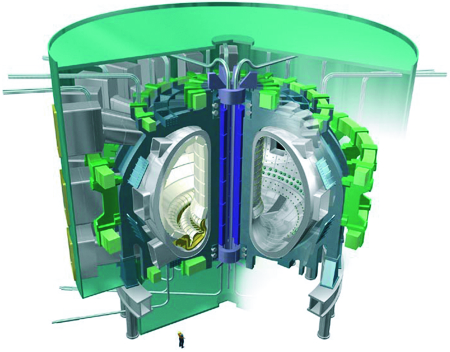A magnetic system confines and controls the plasma position. The magnets of this system are made of superconducting coils that guarantee the operation of a plasma cycle. The geometry of the coils, which ensures proper cooling and good stability with respect to thermal perturbations, consists of an annular channel which houses the superconducting windings around an empty central channel (see figure). The entire system is cooled by the forced flow of supercritical helium (4.3 K, 3.3 bars) passing between the windings and in the central channel.
On the basis of non-linear unsteady flow conditions, a quasi-3D thermo-hydraulic model resolves the equations describing the thermal and electrical behaviour of the conductor, the compressible flow of helium as well as the diffusion of heat on the solid parts. One of the main challenges consists in evacuating the thermal loads induced by the plasma cycle, which have a non-uniform distribution in space and time.
The numerical study gives details of the temperature distribution along the conductor as well as optimum helium pressure, temperature and flow conditions in order to establish the benchmark cryogenic scenario which will have to be handled by the cryogenic plant. This predictive tool, currently in its maturity, provides invaluable information for the dimensional design of the cryogenic system.

